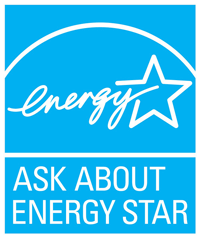
The idea of installing both a furnace and heat pump might feel somewhat odd at first. After all, why should you need two sources of heat? Even though furnaces and heat pumps both provide energy-efficient heat, the differences in their design really make using both of them a practical option. It’s not for all of us, but with the right conditions you can definitely benefit from using a furnace and a heat pump.
You should think about several factors in order to confirm if this sort of setup helps you. Your local climate and the dimensions of your home are both especially important, particularly for the heat pump. This is because some models of heat pumps will work less efficiently in colder weather and larger homes. That being said, you can still benefit from heat pump installation in Moline.
Heat Pumps May Be Less Effective in Cold Weather
Heat pumps are commonly less efficient in cold weather due to how they generate climate control in the first place. Unlike furnaces, which ignite fuel to generate heat, a heat pump reverses its flow of refrigerant to pull heat from outdoor air. This heat is then brought inside and dispersed around your home. Provided there is still a bit of heat energy in the air, a heat pump should function. But the cooler the temperature, the less reliable this process is.
The less heat energy is accessible outside, the more time is needed for a heat pump to bring heat indoors to generate your desired temperature. It may depend on the type of make and model, but heat pumps can start to lose efficiency at temperatures of 40 degrees and below. They still remain an energy-efficient option until 20-25 degrees, at which a gas furnace will be more effective.
What Temperatures Do Heat Pumps Work Best In?
Heat pumps work best in temperate climates 40 degrees and up. That said, you don’t have to give up on the benefits of a heat pump just because your local climate is colder. In fact, that’s why installing both a furnace and heat pump might be worth the costs. You can favor the heat pump for energy-efficient heat until the weather is cold enough to justify swapping to something like a gas furnace.
Certain makes and models feature greater efficiency in cold weather. For example, the Lennox MLA heat pump is capable of operating at 100% capacity at 0°F. It can even remain functional in temperatures as cold as -22°F. For optimum energy efficiency, you’ll likely still want to switch to the furnace in severely cold weather.
So Should I Put in a Heat Pump if I Have a Gas Furnace?
If you’re interested in maintaining the most energy-efficient HVAC system achievable, installing a heat pump and gas furnace at the same time deserves the investment. Not only is a dual-heating system versatile, but it provides other perks like:
- Reliable backup heating – A redundant heating system means even if one stops working, you still have the capability to heat your home. It might not be the most energy efficient, but it’s better than shivering in an unheated home while you sit around for repairs.
- Lower energy costs – The ability to pick which heating system you use depending on the highest energy efficiency reduces your total costs. Smaller heating bills over the life of these heating systems can really add up to a lot of savings.
- Less strain on both systems – Instead of running one system all winter long, heating duties are split between the furnace and heat pump. Key parts may live longer as they’re not under continuous use.
If you’re still uncertain about heat pump installation in Moline, don’t hesitate to reach out to your local expert technicians. They can review your home’s comfort needs and help you decide if a dual-heating HVAC system is the right option.




